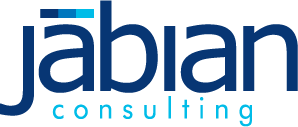If your company is in distribution, or heavily relies on the industry, you’re undoubtedly feeling operational pains these days. The past 15 months have put supply chains through the wringer and caused everything from supply shortages to radical jumps in pricing and unmet demand. The market volatility has companies scrambling from massively scaled back operations while operating around the clock trying to fill the demand. Most companies are in the same position, and unfortunately, there is no quick fix to solve this dilemma.
Are there lessons we can learn and apply to future situations so we won’t be caught in the same position next time? Yes. We think companies should look at three areas that may not have been as much of a focus in the past – employee retention, operating models, and demand management strategy.
Employee Retention
Replacing an employee is much more expensive than retaining one. Retention has additional benefits of preserved company and job knowledge, culture fit, and predictability. However, when times are good, retention isn’t always a focus as companies feel they can always hire a replacement. The last 15 months have proved how wrong that sentiment is. Examine the following when it comes to your employees and their potential to put your business in jeopardy with the current labor shortage:
- Replaceability – Do your employees have skills that are readily applicable to adjacent businesses or services? ie., can your drivers, who normally run long-haul routes, be convinced they’re better off delivering Amazon packages?
- Wages – Are your employees capable of finding comparable or better wages easily elsewhere?
- Loyalty – Do you show value to loyal employees? Are they rewarded for longevity?
- Motivation – Do you know what your employees care about and are you addressing it? Natural assumptions are that employees care most about compensation, but studies show employee engagement is not about how much money one makes but about motivational drivers like growth, relationships, and security. For example, do your employees have the autonomy to choose their own schedules, routes, or shifts?
Operating Models
How often does your leadership team examine your vulnerabilities and address how to overcome them? Crisis planning and simulation trainings are excellent tools to identify where your organization might face challenges during different economic situations. Is your organization nimble enough to make big changes if needed? What are your fixed costs that could be put to new use? Reflect on business lessons learned from the past year and formalize the emergency response plan should the industry challenges continue, or another global event occurs. Having a plan for how to deal with each potential situation will help make the decision process that much easier and faster and give you a competitive advantage over companies that will be reeling from the shock of sudden change.
Demand Management
Like examining your operating model for vulnerabilities, having a robust demand management office (DMO) will help identify opportunities and potential threats before they become an issue. Too often a DMO is used for primarily internal operations rather than examining external demand and capacity constraints. Having that visibility, and a maturity model to make it an active part of the leadership decision criteria, will ultimately save time and resources and allow the company to pivot or get ahead of potential landmines.
Not all scenarios can be planned for and not all businesses are able to respond to rapid change. But making sure your organization is as prepared as possible will not only position you for future success, but will show immediate returns through a more engaged, aligned workforce, and an increase in efficiency for the most critical and beneficial projects.
